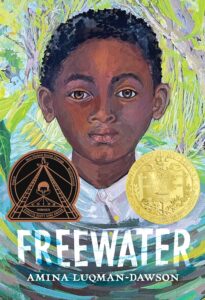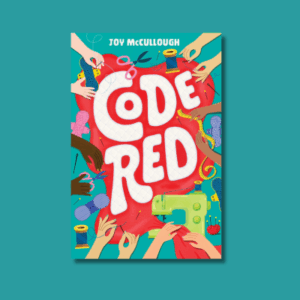 Review By: Alexa Kulak
Review By: Alexa Kulak
Published: 2022
Genre(s): Middle Grade Fiction, Historical Fiction
Audience: Grades 5 to 8
Content Warnings: Violence, racism, slavery and abuse, death
Goodreads Link: Freewater
Publisher’s Summary:
A middle-grade novel about two enslaved children’s escape from a plantation and the many ways they find freedom. Under the cover of night, twelve-year-old Homer flees Southerland Plantation with his little sister Ada, unwillingly leaving their beloved mother behind. Much as he adores her and fears for her life, Homer knows there’s no turning back, not with the overseer on their trail. Through tangled vines, secret doorways, and over a sky bridge, the two find a secret community called Freewater, deep in the swamp.
In this society created by formerly enslaved people and some freeborn children, Homer finds new friends, almost forgetting where he came from. But when he learns of a threat that could destroy Freewater, he crafts a plan to find his mother and help his new home.
Review:
“Freewater” by Amina Luqman-Dawson is a historical fiction middle grade novel about the little known maroon communities of free men in the South during slavery. A young boy named Homer and his sister Ada escape the meanness of their plantation and are welcomed by the people of Freewater, a swamp community of runaway slaves and freeborn children. As they learn what it means to be free, they create a daring plan to rescue those they left behind.
This is a book about courage, family (whether found or born), and freedom. Rotating between the points of view of a large cast of characters—namely Nora, Homer, and Sanzi—each perspective explores personal ideas of identity and liberation. Homer begins to understand the wonder of making his own choices. Sanzi, free-born, cannot imagine a world that once feared her existence. Nora, a mute white child in an abusive household, has legal freedom but lives without safety or love. All three children hold complex and nuanced relationships with the concept of freedom, beautifully portrayed by the author.
The book also inspired the reviewer to research southern maroon communities—stories often overshadowed by northern narratives of freedom. This perspective broadens how we understand resistance, survival, and history. The reviewer notes, however, that the book softens the harsh realities of slavery with fairy tale elements. Most characters receive happy endings, which could be used to discuss fiction vs. historical accuracy.
Despite this, the book is deeply moving, accessible, and layered with themes of belonging, justice, and resilience. It adds needed diversity to middle grade historical fiction, especially with its focus on Black voices and lesser known histories. The language is simple but the themes are rich, making it a strong classroom choice.



